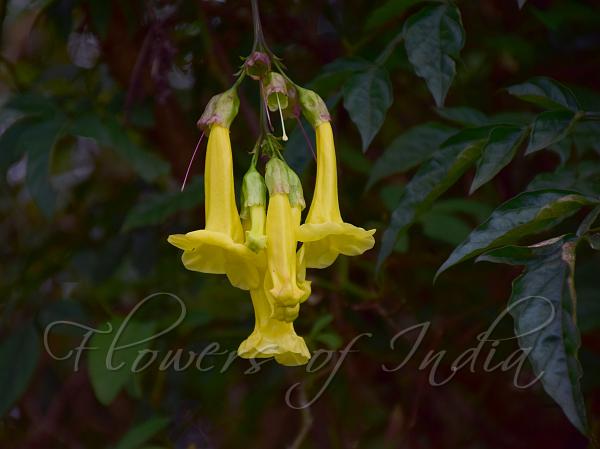|
| Pauldopia |
|

|

| File size | 393774 |
| Original date | 9/24/16 11:08 AM |
| Resolution | 2048 x 1536 |
| Flash | Flash did not fire |
| Focal length | 140.0mm |
| Exposure time | 1/1000s |
| Aperture | 5.6 |
| Focus Distance | |
| Metering Mode | Spot |
| Camera make | NIKON CORPORATION |
| Camera model | NIKON D5300 |
| Sensor type | OneChipColorArea |
|
|
|
|
Photo: |
Botanical name: Pauldopia ghorta Family: Bignoniaceae (Jacaranda family)
Synonyms: Bignonia ghorta, Stereospermum ghorta, Tecoma bipinnata
Synonyms: Bignonia ghorta, Stereospermum ghorta, Tecoma bipinnata
Pauldopia is a shrub or small tree 1.5-2.5 m tall
(can grow up to 6 m). The generic name is in the honour of Paul Louis
Amans Dop (1876-1954), a French botanist who worked extensively in
Indochina. Branchlets are copiously warty. Leaves are sparsely
velvet-hairy, double-compound, about 38 cm long, with side-stalks
narrowly winged. Leaflets are ovate-lanceshaped, 3-7.5 X 1.5-2.5 cm,
base wedge-shaped, margin entire, fringed with hairs, tip long
tapering. Flowers are borne in panicles or cymes at branch-ends,
nodding, sometimes flowers densely clustered at flower-cluster-stalk
tip, 8-12 cm; flower-cluster-stalk 15-20 cm. Flower-stalks are 1-2 cm,
sparsely velvet-hairy. Calyx is about 1.5 cm, less than 1 cm in
diameter, tip nearly flat. Flower lobes are semirounded, spreading,
yellow or red-brown, about 1.5 cm, tube dark yellow, 3-6 cm, slightly
curved. Filaments thread-like, 2-2.5 cm, hairless; anthers divergent,
2-celled, connective subulate. Style about 3 cm, smooth; stigma
lingulate. Capsule long round, about 15-30 cm long, 5-8 mm in
diameter, long tapering at both ends. Pauldopia is found in the
Evergreen broad-leaved forests, roadsides, slopes, at altitudes of
600-1800 m in S Yunnan, NE India, Laos, Myanmar, Nepal, Sri Lanka,
Thailand, Vietnam. It is grown as an ornamental plant. Flowering:
May-June.
| Identification credit: Amber Srivastava | Photographed in Cherapunji & Shillong, Meghalaya. |
• Is this flower misidentified? If yes,